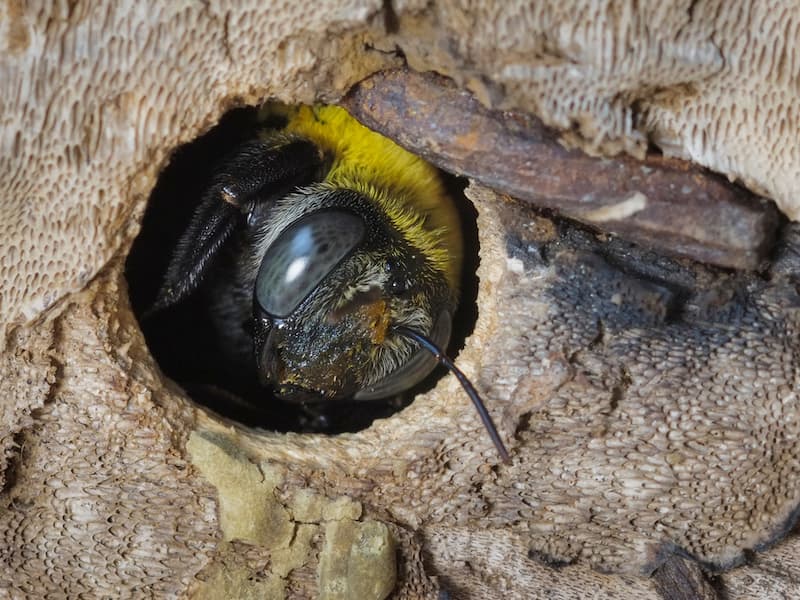Being scared when you find a wasp nest on your property is normal. Wasps are known for having painful stings, and upsetting their nests can make them act out. You need to know where to look for a wasp nest and how to safely get rid of it.
How to Find Wasp Nests:
You have to find a wasp nest before you can get rid of it. Different kinds of wasps build their homes in different places. There are a few different kinds of wasp nests, and you can find them:
- Paper wasp nests: You can usually find these nests hanging from overhangs, eaves, or trees. The papery stuff they’re made of comes from the wasps chewing on wood fibres and mixing them with their saliva.
- Yellowjacket Nests: Yellowjackets often dig holes in the ground to make their nests. Find small holes in the ground that are being used by wasps. They can also build their nests in attics, wall voids, and other small places.
- Hornet nests with bald faces are big and football-shaped. They are usually high up, like in trees or on the eaves of buildings.
- Mud Dauber Nests: Mud daubers make mud nests that look like small tubes. They’re stuck to rocks, walls, and even the sides of houses.
- Wasps that build their homes in the ground: Some wasps, like digger wasps, do this. A small hole at the top lets the birds get in and out of these nests.
Safely get rid of wasp nests:
Once you’ve found a wasp nest, you should think about getting rid of it. Here are some important safety tips for getting rid of wasp nests:
- Figure out what kind of wasp it is. Different kinds of wasps have different personalities. When startled, yellow jackets are known to be very mean, while mud daubers are usually less mean. Being able to name the species will help you figure out how dangerous it is.
- Wear protective clothing: It’s important to keep yourself safe when you get close to a wasp nest. Cover your skin with thick, long clothes, gloves, and a veil or hat to protect your face. Safety glasses are another good idea.
- Pick the Right Time: The best time to get rid of a wasp nest is in the evening or at night, when most of the wasps are inside. They aren’t as busy at these times, so you are less likely to get stung.
- Use the Right Tools: You may need different tools depending on where the nest is and what kind of nest it is. Wasp spray, for instance, can work on nests on the ground, but you might need a wasp pole to get rid of nests that are high up.
- Follow safety rules: Read and follow the directions on any bug spray or wasp spray you use. Make sure it’s made to get rid of wasps and hornets.
- Stay Away: If you want to avoid getting stung while using poison, make sure you stay away from the nest. Carefully follow any instructions for spraying.
- Be careful: if you try to remove the nest yourself. Small nests can be safely removed by homeowners, but bigger or harder-to-reach nests should be taken care of by experts. If you’re not sure or are allergic to wasp stings, you should call a professional pest control service.
- Get Rid of the Nest the Right Way: Once the nest has been removed, make sure to get rid of it in a safe way, far away from your property, so that any wasps that are still there don’t come back.
- Keep an eye out for stragglers: After getting rid of the nest, keep an eye out for any wasps that might come back to the area. Residual pesticides can be used to get rid of these last few bugs.
When to Get Help from Experts:
It’s safer and more effective to call a professional pest control service if the nest is big, hard to get to, or in a dangerous place. Professionals who do pest control have the tools and information to safely and effectively deal with wasp nests. Finally, if you are allergic to wasp stings, you should definitely get professional help to lower your risks.
As a conclusion:
To keep everyone safe, getting rid of a wasp nest needs to be carefully planned and carried out. It is very important for homes to know where to find different kinds of wasp nests and how to safely get rid of them. If you’re not sure what to do or if the nest is in a tough spot, don’t be afraid to call a professional pest control service. When working with these stinging bugs, you should put your safety first.
Wasp Control Newmarket, We understand that wasps serve a vital role in our ecosystem as beneficial and visually striking insects. They contribute to pollination, control pests, and typically carry out their tasks without causing disruptions to humans.
